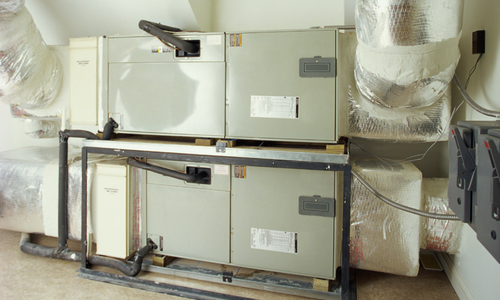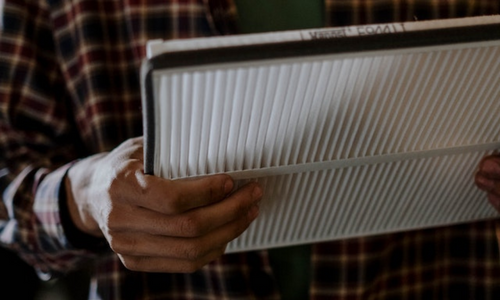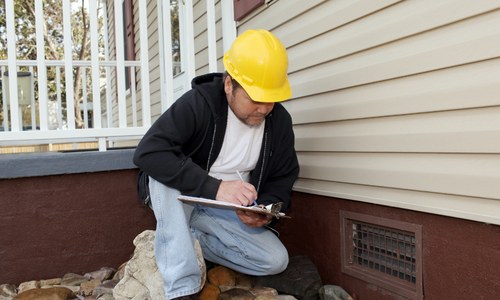As the outside temperature starts to fall, having a furnace in your house is an essential piece of equipment for maintaining a comfortable and warm environment inside. But what happens if your furnace begins spewing chilly air instead of warm air when you use it? This may be quite unpleasant and uncomfortable, leaving you wondering why your furnace is not performing as it should.
Why is my furnace blowing cold air? It’s not always easy to figure out why your furnace is producing frigid air for you to breathe. It might be caused by a range of issues, ranging from very small failures to much more serious ones. If you have a furnace that is blowing chilly air, knowing the probable reasons for this issue will help you identify the problem and take the actions required to solve it.
In this article, we will explore the common causes of a furnace blowing cold air and the steps you can take to troubleshoot and fix the problem. But first, it’s essential to understand how a furnace works. So, let’s go through the basics.
How does a furnace work?
A furnace is a crucial component of the heating systems of the majority of houses, particularly during the winter months when temperatures drop below acceptable levels. It is responsible for supplying heat and comfort to your home by combusting fuel, such as natural gas or propane, and circulating the warm air around the house.
A furnace’s primary components are the burner, heat exchanger, blower fan, air filter, and thermostat. When the thermostat is set to the appropriate temperature, it signals the furnace to begin heating. The furnace will subsequently begin heating the air in your house.
Initially, the burner ignites the fuel, resulting in the production of heat. The heat exchanger is responsible for transporting heat from the burner to your home’s air. When the heat exchanger warms up, the blower fan draws air from your house into the furnace.
After passing through the heat exchanger, which heats the air, it is transported throughout your house through a network of ducts. Before air is circulated, it is filtered to remove any particles or debris, such as dust and pollen, to guarantee that the air is clean and healthy.
While air moves throughout your house, the thermostat continues to check the temperature. After the required temperature is attained, the furnace turns off and remains off until the temperature falls below the specified value, at which point the cycle begins again.
What are the types of furnaces?

It is vital to note that numerous kinds of furnaces exist, each with a distinct method of operation. Natural gas furnaces, electric furnaces, propane furnaces, and oil furnaces are among the most prevalent kinds.
Nowadays, natural gas furnaces are the most prevalent type of home heating system. They function by using natural gas to fuel the burner, which then warms the heat exchanger and distributes warm air throughout the house.
Electric furnaces, on the other hand, utilize energy to power a set of heating elements that heat the air before it is circulated around the residence. Electric furnaces are often more costly to run than natural gas furnaces, but they are an excellent alternative for residences without access to natural gas.
Propane furnaces operate similarly to natural gas furnaces, except their burners are powered by propane gas instead of natural gas. Propane is often utilized in residences that lack access to a natural gas connection.
Oil furnaces are less prevalent than natural gas or propane furnaces, although some homeowners continue to use them. They function by burning oil in the burner, which warms the heat exchanger and circulates warm air throughout the residence.
Why is my furnace blowing out cold air?
When the chill of winter draws closer and the temperature continues to fall, we depend on the warmth and coziness provided by our furnaces. On the other hand, if the furnace begins to blast cold air, this may be a very aggravating and unpleasant experience.
Why is my furnace blowing cold air? You are not the only person who has wondered why my furnace is blowing cold air. This is a typical issue that a lot of property owners have to deal with, and there are a few different potential causes for it. In this section, we will discuss the potential reasons why your furnace is blowing cold air.
Settings made on the thermostat
The settings on your thermostat are likely one of the most prevalent contributors to your furnace producing chilly air instead of warm air. In the event that the thermostat is set to the “on” position rather than the “auto” position, the blower will continue to operate even in the event that the furnace is not generating any heat. Your whole house will be filled with chilly air as a consequence of this action. To rectify this problem, just change the setting on the thermostat to “auto,” and the heating system will only circulate warm air when it is actively generating heat.
Filthy Air Filter

A filthy air filter is another typical reason for a furnace spewing cold air, which may be frustrating for homeowners. As the air filter gets clogged with dust and other debris, it reduces the amount of air that can pass through it and into the furnace. This may result in the furnace reaching an unsafe temperature, which in turn activates a safety device that turns off the burners.
The blower will continue to work even after the burners have been turned off, distributing cool air around your house. Just installing a new filter in the ventilation system can rectify this problem. It is advised that you change out your furnace’s air filter anywhere from once every one to three months, depending on how often you use your heating system.
Pilot Light or Ignition Problems
There may be an issue with the pilot light or the ignition mechanism in your furnace if you are experiencing chilly air flowing through the vents. When the furnace is turned on, a tiny flame known as the pilot light is ignited, which then lights the burners. In the event that the pilot light goes out, the burners will not light, and your house will be subjected to the blowing of chilly air.
It is possible that something is wrong with the ignition system if the pilot light is still lit but the burners do not light up. You may attempt fixing this problem by igniting the pilot light again. If it keeps going out or if the burners still do not light, you may have to get a professional to come examine and fix the ignition system for you.
Clogged Burners
Burners that are blocked with debris are yet another potential reason why a furnace is producing chilly air. Burners have a tendency to get clogged over time as a result of the gradual accumulation of dirt, dust, and other particles in their interiors.
If this occurs, the burners won’t be able to create any heat, and the blower will keep circulating chilly air around your house. In order to resolve this problem, you will need the assistance of an experienced HVAC specialist to clean the burners.
Problems with the Gas Supply
It’s possible that there’s an issue with the gas supply if your furnace is producing chilly air for you to breathe. If the gas supply is cut off or disrupted in any way, the furnace will be unable to create heat, and your whole house will be filled with frigid air instead of warm air.
If you have any reason to believe that there is a problem with the gas supply, you should get in touch with the gas company or a qualified HVAC specialist so that they can examine and fix the issue.
Issues with the Ductwork
It’s possible that issues with your ductwork are to blame if your furnace is producing chilly air in your home. It is possible for there to be a restriction in the flow of warm air from the furnace if the ducts are clogged, broken, or improperly built, which would result in the furnace blowing cold air instead.
In order to resolve this problem, you will need to have a qualified HVAC specialist evaluate and repair your ductwork. This may be done at your earliest convenience.
Furnace Size
Last but not least, if your furnace is too small for your house, it can have trouble keeping up with the demand for heat, which might lead it to blast chilly air instead of warm air. If this is the case, you will likely need to have a trained HVAC specialist examine your furnace and provide recommendations on a suitable replacement of the appropriate size.
How to keep my furnace healthy?
It is essential to do routine maintenance on a furnace since this helps to ensure that it is operating correctly, effectively, and safely. A furnace that is properly maintained could find its lifespan increased, which can save you money in the long run on the expenses of repairs and replacements. The following is a list of essential advice that will assist you in the maintenance of your furnace:
Change air filters
Regularly changing your air filters is important since a filthy filter may restrict airflow and lower the performance of your heating system. To maintain peak performance, the air filter should be changed every one to three months.
Inspect and clean the blower

The blower is essential for dispersing warm air throughout your house. It should be cleaned on a regular basis to get rid of any dust or debris that may have gathered.
Do an inspection of the flue
Check to see that there are no blockages or obstructions in the flue, since these might lead to the deadly accumulation of carbon monoxide. It is also recommended that you have a qualified individual examine your chimney flue at least once per year.
Lubricate the moving components
Your furnace contains a lot of moving parts, and in order for them to work correctly, they need to be lubricated. Read the owner’s manual for instructions on which components need lubrication and how often it should be applied to those parts.
Annual maintenance
A professional inspection of the furnace should be carried out at least once a year to verify that everything is operating as it should and to identify any possible problems before they develop into more serious difficulties.
Conclusion
‘Why is my furnace only blowing cold air?’ is a common question that homeowners may ask when their furnace is not functioning properly. With the help of this article, you will be able to take the required actions to rectify the problem and guarantee that your furnace is operating correctly if you first identify the precise source of the issue.
In addition, the implementation of preventive measures such as routine maintenance may assist in warding off problems from ever materializing in the first place.
It is always advisable to call a professional HVAC expert if you are uncertain about the source of your furnace’s cold air or if you need help with repairs. A professional HVAC technician, such as those at Autumn Air will be able to identify the issue and fix it in a safe and efficient manner.
Call (602) 266-5247 or click here to schedule an appointment today.
